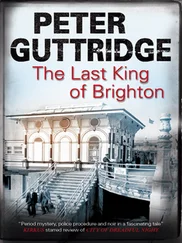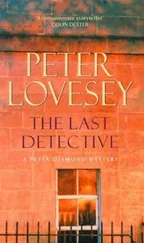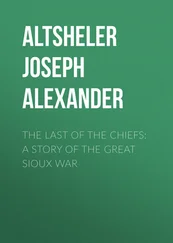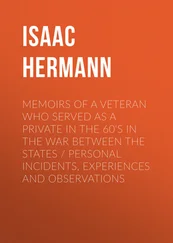Elsewhere it was a matter of gathering up remains that had been lying around for some time or had been scattered by shellfire, and doing the best you could. Even when people had been given a decent burial, the ground in which they lay was often later fought over as opposing armies advanced and retreated. The most careful burial could prove very temporary indeed as high-explosive shells churned up the earth once more, destroying graves and redistributing the dead piecemeal. Given these conditions, it is perhaps not so surprising that over 300,000 of the 750,000 British and Empire troops killed in action on the Western Front still have no known grave.
One of the jobs undertaken by the British Red Cross was to ascertain what had happened to those who were listed as ‘missing in action’. This term was not always a euphemism, and the Red Cross was occasionally able to bring good news to distraught relatives. Soldiers unaccounted for may have been lying unidentified in hospitals, or been taken prisoner. Stories abounded of soldiers separated from the regiment during battle and found wandering behind the lines wholly disoriented, or perhaps suffering the effects of shell shock. Mostly, however, the missing were rightly presumed dead. The Red Cross’s job was hampered by the fact that at the beginning of the war no system of recording burials had been organised, so that even when a soldier was known to have died and had been given a proper burial, it was not always easy to find the site. The careless practices of Waterloo had long since been abandoned, but marking and maintaining soldiers’ graves in distant engagements such as the Boer War in South Africa remained a fairly haphazard affair. This may have been deemed acceptable for Tommy Atkins, the professional soldier, but many of the dead of the First World War were civilian volunteers and conscripts and their families expected them to be treated accordingly.
It was while working with the Mobile Unit of the British Red Cross Society based at Lille that Fabian Ware, a former editor of the Morning Post , took it upon himself to begin making a note of British graves and their locations. The Unit had been formed in September 1914 after the Secretary of State for War, Lord Kitchener, had asked for volunteers to go in search of soldiers who had gone missing and might well be wandering lost in the chaos that often prevailed in the aftermath of battle. It was a curiously amateur yet effective organisation, made up of people in civilian vehicles who not only drove around looking for lost soldiers but also collected the wounded and transported them to hospitals. Ware subsequently persuaded the Adjutant-General of the British Expeditionary Force that his project to record burial sites should receive official War Office backing, and in March 1915 a Graves Registration Commission was created. Ware himself was given the rank of major and by October the Commission had registered over 31,000 graves, all of which had their temporary markers replaced by wooden crosses on which details were indelibly recorded. Lists of names and locations were drawn up and Ware entered negotiations with the French authorities to acquire land in perpetuity for the construction of British war cemeteries.
Once created, cemeteries required considerable effort to maintain, and so in January 1916 Ware set up the National Committee for the Care of Soldiers’ Graves. News of this organisation’s work had reached Britain, and relatives of the dead began to direct their enquiries to this new body as well as to the Red Cross. In order to answer these enquiries, the Graves Registration Commission was reorganised in the spring of 1916 into the Directorate of Graves Registration and Enquiries (DGRE), supplying relatives with information about and even photographs of burial sites. The intention was that after the war was over people would be able to visit these graves, but at the time such pilgrimages must have seemed a very long way off.
In May 1917, the National Committee for the Care of Soldiers’ Graves became the Imperial War Graves Commission, constituted under royal charter and with the Prince of Wales as its president. The Commission undertook the daunting task of providing a marked grave for every corpse, even those whose headstones would merely read ‘A Soldier of the Great War: Known Unto God’, a designation for the unidentified chosen by Rudyard Kipling, who had been appointed literary adviser to the Commission, and whose own son, killed at the Battle of Loos in 1915, was among those with no known grave.
Someone who conducted many burial services at the front, both of the known and unknown, was an army chaplain called David Railton. The son of a leading figure in the Salvation Army, Railton served on the front line as a padre throughout the war and had been awarded an MC in 1916 for tending the wounded under fire. It was Railton who came up with the idea after the war that a single unidentified serviceman should be brought home to Britain as a representative not only of those whose bodies had never been found or identified, but of all those who had been killed in action. In August 1920 he sent this proposal to the Dean of Westminster, Herbert Ryle, who, in passing it on first to George V and then to Lloyd George, shamelessly claimed it as his own. The King rejected the idea as in poor taste, and there was some worry that such a gesture might reopen wounds that were in the process of healing, but it won acceptance when placed before a cabinet meeting in October. Once again, preparations had to be made hastily since it was decided that a state funeral of this representative of all the dead should take place on Armistice Day, 11 November, followed by burial in Westminster Abbey.
By making the funeral of an unidentified soldier brought back from the battlefields the focus of the second anniversary of the Armistice, the Church had a chance to reassert itself at the centre of the commemoration. At the insistence of the Archbishop of Canterbury, Randall Thomas Davidson, there had in fact been a short service of dedication when the temporary Cenotaph was unveiled (Lloyd George had favoured an entirely secular event), but Lutyens’ empty tomb still seemed to the Church distressingly pagan. Now, however, there was an opportunity to reclaim Armistice Day for God.
Selecting the soldier who would become known as the Unknown Warrior was made into an elaborate procedure, and there are several different versions of what happened. The most reliable account is that provided by Brigadier-General L.J. Wyatt, GOC the British troops still based in France and Flanders, who took part and provided a written account in a letter published in the Daily Telegraph in November 1939. In conditions of strictest secrecy, four unidentified British bodies were exhumed from temporary battlefield cemeteries at Ypres, Arras, the Aisne and the Somme on the night of 7 November 1920. These exhumations were carried out by four carefully selected teams made up of an officer and two other ranks. Presumably the rankers were handed the shovels and sacks, while the officer was there to direct operations, but none of the men was told why the bodies were being dug up and brought back by field ambulance to GHQ at St-Pol-sur-Ternoise. The men were further instructed that if they discovered anything that revealed the rank or regiment of the soldier they had exhumed they should immediately rebury the remains and select another grave. The intention was that any of the relatives of the 517,773 combatants whose bodies had not been identified could believe that the Unknown Warrior might be their lost husband, father, brother or son; but on the advice of the Abbey, which was nervous about the possibility of receiving more recent and potentially noisome remains, it is probable that instructions had been given that the four disinterred soldiers should have died early in the war on the grounds that such bodies would have been reduced to mere bones.
Читать дальше












